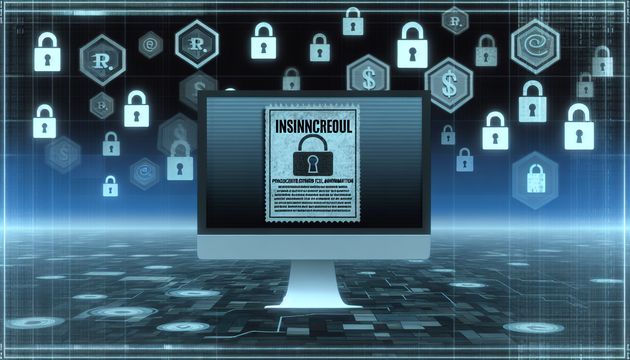
Insider Threats: Insights from the Davis Lu Case
The story of Davis Lu, a developer who was sentenced for sabotaging his former employer’s systems, highlights the significant risk posed by insiders within organizations. Insider threats, as demonstrated by Lu’s actions, involve individuals exploiting their access to inflict harm on their organizations. Lu’s deep understanding of his company’s systems enabled him to plant malicious code, resulting in extensive damage and financial loss (Bleeping Computer). This incident underscores the dual nature of insider threats: malicious insiders, like Lu, who act with intent to harm, and negligent insiders, who may inadvertently cause damage through carelessness (Justice Department). Understanding these dynamics is crucial for developing effective prevention strategies.
Understanding Insider Threats: Lessons from the Davis Lu Case
The Anatomy of Insider Threats
Insider threats pose a significant risk to organizations, as illustrated by the actions of Davis Lu. An insider threat occurs when an individual within an organization misuses their access to compromise the organization’s systems or data. In Lu’s case, his intimate knowledge of the company’s systems allowed him to plant malicious code that caused extensive damage (Bleeping Computer). This section will explore how insider threats manifest and the potential consequences.
Insider threats can be categorized into two main types: malicious insiders and negligent insiders. Malicious insiders, like Lu, intentionally harm the organization for personal gain or revenge. Negligent insiders, on the other hand, inadvertently cause harm through carelessness or lack of awareness. Both types can lead to significant financial and reputational damage, as seen in the Lu case, where the company suffered losses amounting to hundreds of thousands of dollars (Justice Department).
Motivations Behind Insider Threats
Understanding the motivations behind insider threats is crucial for developing effective prevention strategies. In Davis Lu’s case, his actions were driven by a sense of retaliation after a demotion and reduction in responsibilities (InkLattice). This highlights the role of personal grievances and perceived injustices as significant motivators for insider attacks.
Other common motivations include financial gain, coercion, and ideological beliefs. Financially motivated insiders may exploit their access to steal sensitive information or intellectual property for monetary benefit. Coercion can occur when an insider is pressured or blackmailed into committing malicious acts. Ideological insiders may act based on beliefs or affiliations that conflict with the organization’s values or objectives.
Methods of Insider Threats
Insider threats employ various methods to achieve their objectives, often leveraging their authorized access to bypass security measures. In Lu’s case, he embedded malicious code within the company’s systems, including a “kill switch” that locked out users when his account was disabled (Cleveland.com). This section will delve into common methods used by insiders to compromise organizational security.
-
Data Exfiltration: Insiders may steal sensitive data by copying it to external devices or sending it to unauthorized recipients. This can occur through email, cloud storage, or physical media.
-
Sabotage: Malicious insiders may damage or destroy critical systems, as Lu did by creating infinite loops that crashed servers (True Crime News).
-
Credential Abuse: Insiders with elevated access can misuse their credentials to access restricted areas or escalate their privileges further, as evidenced by Lu’s research into privilege escalation (Cybersecurity News).
-
Social Engineering: Insiders may manipulate colleagues or exploit relationships to gain additional access or information.
Detection and Prevention Strategies
Detecting and preventing insider threats requires a multifaceted approach that combines technology, policies, and employee awareness. The Davis Lu case underscores the importance of robust insider threat detection mechanisms, as his actions went undetected until significant damage occurred (Justice Department).
-
Access Controls: Implement strict access controls to ensure employees only have access to the information and systems necessary for their roles. Regularly review and update access permissions, especially after role changes or terminations.
-
Behavioral Monitoring: Utilize monitoring tools to detect unusual or suspicious behavior, such as unauthorized access attempts or large data transfers. Behavioral analytics can help identify potential insider threats before they cause harm.
-
Employee Training: Educate employees about the risks and signs of insider threats. Encourage a culture of security awareness and reporting of suspicious activities.
-
Incident Response Plans: Develop and regularly test incident response plans to ensure quick and effective responses to insider threats. This includes procedures for isolating affected systems, preserving evidence, and communicating with stakeholders.
Legal and Ethical Considerations
The legal and ethical implications of insider threats are significant, as organizations must balance security measures with employee privacy and rights. The Davis Lu case resulted in legal action and a prison sentence, highlighting the severe consequences of insider attacks (Bleeping Computer).
Organizations must ensure that their insider threat detection and prevention measures comply with legal requirements and respect employee privacy. This includes transparent communication about monitoring practices and obtaining employee consent where necessary.
Additionally, organizations should consider the ethical implications of their security measures, ensuring they do not create a culture of distrust or infringe on employee rights. Balancing security with privacy and trust is crucial for maintaining a positive organizational culture while protecting against insider threats.
In conclusion, the Davis Lu case serves as a stark reminder of the potential damage insider threats can cause. By understanding the motivations, methods, and detection strategies, organizations can better protect themselves from similar incidents. Implementing comprehensive security measures, fostering a culture of security awareness, and addressing legal and ethical considerations are essential steps in mitigating the risk of insider threats.
Final Thoughts
The Davis Lu case serves as a stark reminder of the potential damage insider threats can cause. By understanding the motivations, methods, and detection strategies, organizations can better protect themselves from similar incidents. Implementing comprehensive security measures, fostering a culture of security awareness, and addressing legal and ethical considerations are essential steps in mitigating the risk of insider threats. The legal repercussions faced by Lu, including a prison sentence, emphasize the severe consequences of such actions (Bleeping Computer). Organizations must balance security with privacy and trust to maintain a positive culture while safeguarding against insider threats.
References
- Bleeping Computer. (2025). Dev gets 4 years for creating kill switch on ex-employer’s systems. https://www.bleepingcomputer.com/news/security/dev-gets-4-years-for-creating-kill-switch-on-ex-employers-systems/
- Justice Department. (2025). Chinese national who deployed kill switch code on employer’s network sentenced to four years in prison. https://www.justice.gov/opa/pr/chinese-national-who-deployed-kill-switch-code-employers-network-sentenced-four-years-prison
- InkLattice. (2025). How a fired programmer caused a corporate meltdown. https://www.inklattice.com/how-a-fired-programmer-caused-a-corporate-meltdown/
- Cleveland.com. (2025). Former Eaton Corp employee found guilty of sabotaging company’s computer systems. https://www.cleveland.com/court-justice/2025/03/former-eaton-corp-employee-found-guilty-of-sabotaging-companys-computer-systems.html
- True Crime News. (2025). Software developer convicted of creating kill switch code upon his termination. https://truecrimenews.com/2025/03/11/software-developer-convicted-of-creating-kill-switch-code-upon-his-termination-davis-lu-ohio-texas/
- Cybersecurity News. (2025). Developer pleads guilty. https://cybersecuritynews.com/developer-pleads-guilty/



